
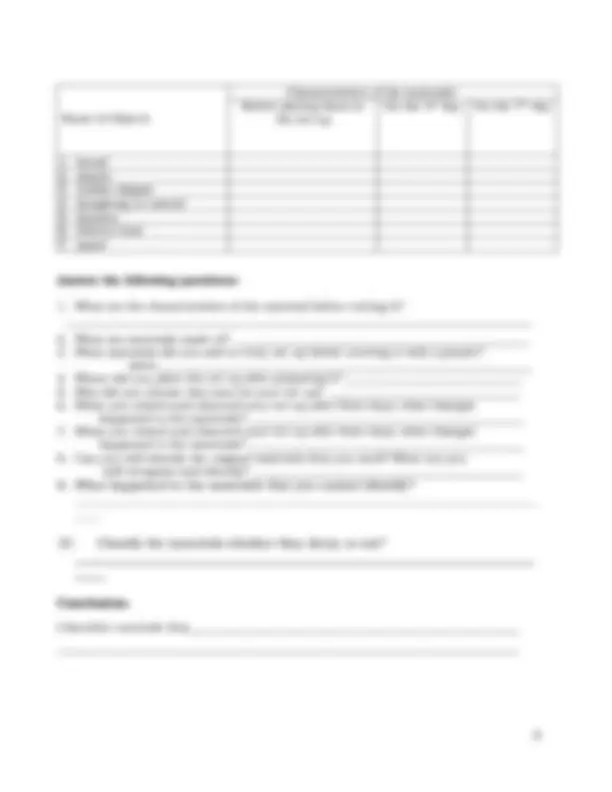
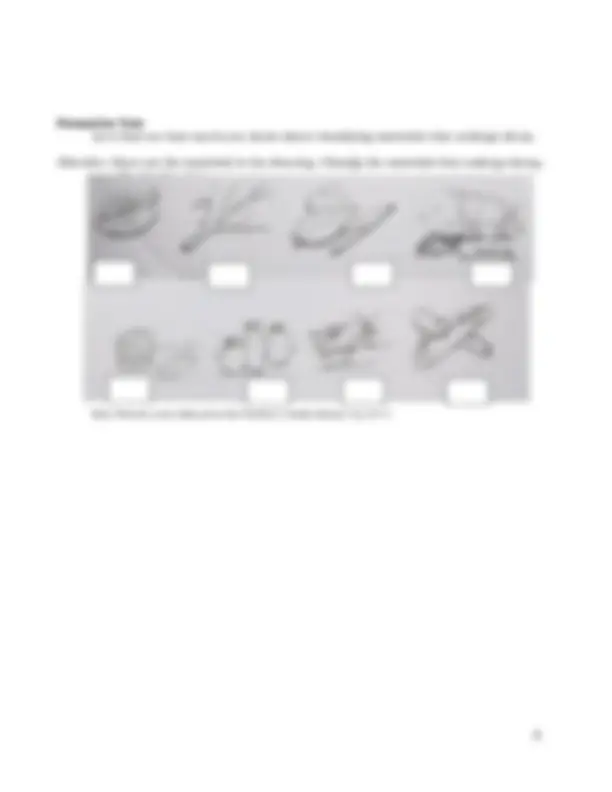
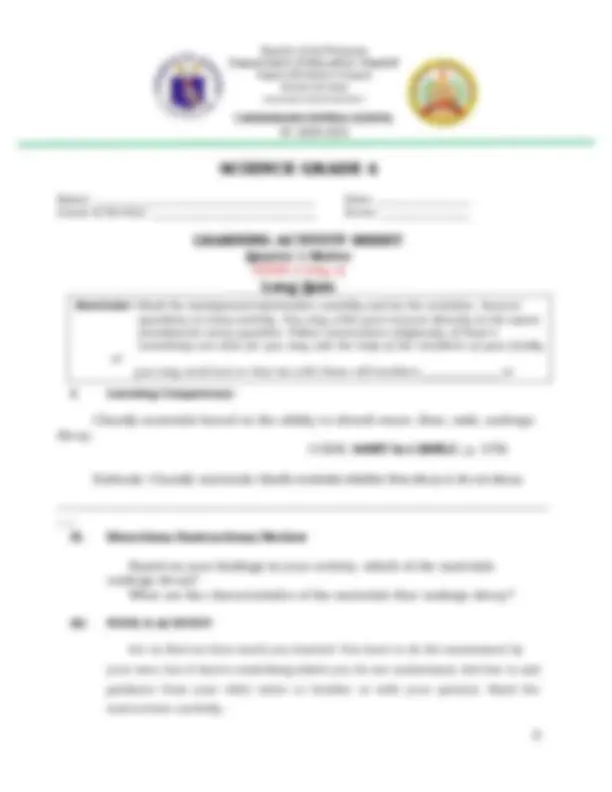
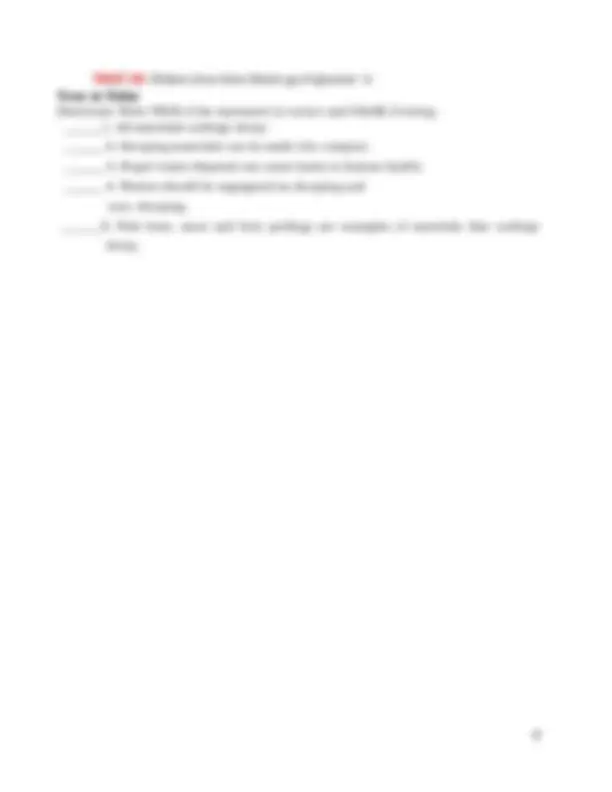
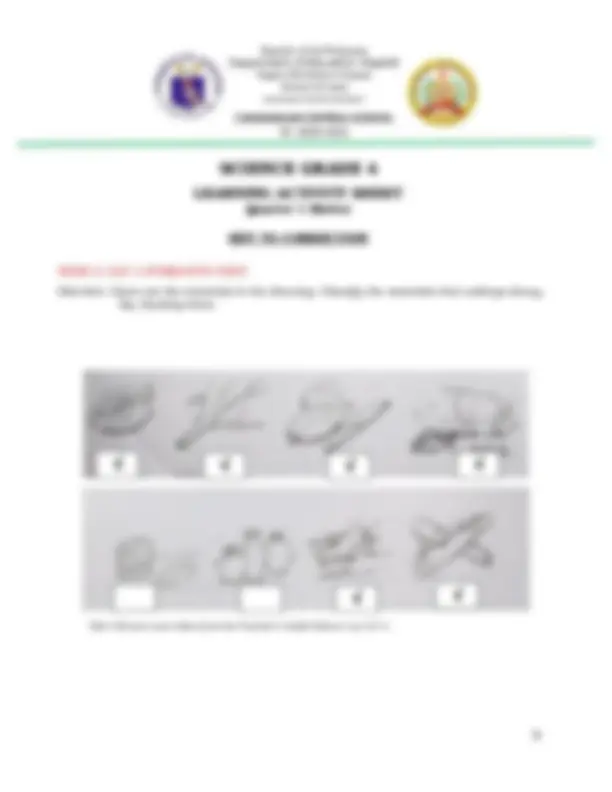
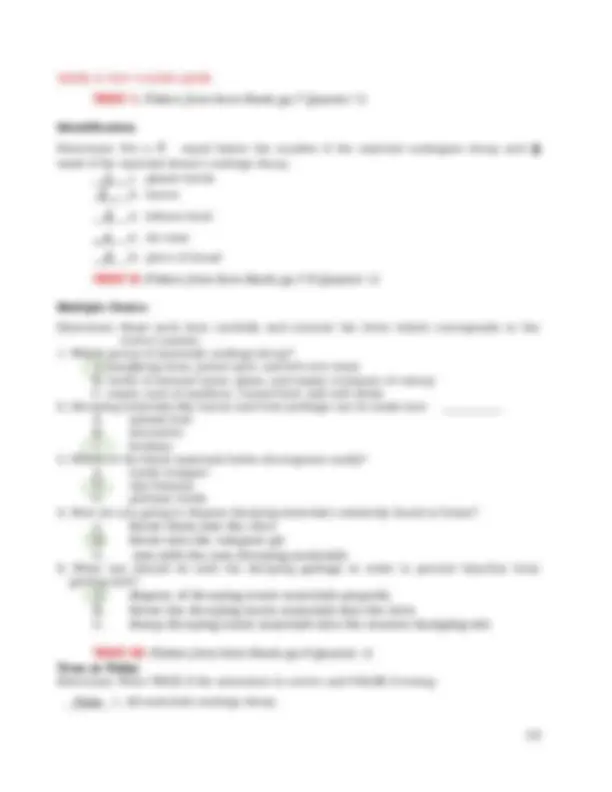


Study with the several resources on Docsity

Earn points by helping other students or get them with a premium plan


Prepare for your exams
Study with the several resources on Docsity

Earn points to download
Earn points by helping other students or get them with a premium plan
Community
Ask the community for help and clear up your study doubts
Discover the best universities in your country according to Docsity users
Free resources
Download our free guides on studying techniques, anxiety management strategies, and thesis advice from Docsity tutors
It is a sample activity sheets in science made for Grade 4 students.
Typology: Exercises
1 / 11

This page cannot be seen from the preview
Don't miss anything!







Name: ________________________________________ Date: _________________ Grade & Section: ______________________________ Score: ________________
Republic of the Philippines Department of Education (DepEd) Region VIII (Eastern Visayas) Division of Leyte MATALOM SOUTH DISTRICT
Reminder: Read the background information carefully and do the activities. Answer questions in every activity. You may write your answer directly on the space provided for every question. Follow instructions religiously. If there’s something not clear for you may ask the help of the members of your family or you may send text or chat me with these cell numbers _______________ or
Decay- to be slowly destroyed into bits in the presence of water, air and soil.
Not all plants and animals decay at the same time. Some were compressed under water and thick layers of soil over millions of years. They were converted into fossil fuels such as coal, oil or natural gas. These oils are used by power stations, factories, motor vehicles, and others. The organic matter in soil is derived from plants and animals. It becomes organic fertilizers. Organic fertilizer from compost pit does not harm but enrich the soil. Some factors that contribute to the decaying process of the of the materials are sunlight, water, soil and action of microorganisms. Leftover foods are kept in refrigerators to avoid or delay spoilage since microorganisms that break down food do not grow fast in cold temperature. Science LM p. 10
You may browse in YouTube this topic - Science IV: Lesson 3- Materials That Undergo Decay https://youtu.be/1fyW5SOFANA?t=
I. Learning Competency:
III. Pupil’s Activity Let us find out which of the materials at home easily decay. You have to do the activity with your elder sister or brother or with your parents. Be sure to handle things carefully to avoid accident. Follow carefully the procedure or steps. You Will Need: 3 pcs. Of transparent plastic cups, slices of bread, plastic, rubber slipper, plastic bottle cups (without a cork or carton) kangkong leaves or camote leaves, water, 2 slices of banana, leftover food and paper Procedure:
Formative Test Let’s find out how much you know about classifying materials that undergo decay. Direction: Given are the materials in the drawing. Classify the materials that undergo decay, By checking them. Note: Pictures were taken from the Teacher’s Guide Science 4 p.10-11.
Name: ________________________________________ Date: _________________ Grade & Section: ______________________________ Score: ________________
I. Learning Competency:
Let us find out how much you learned. You have to do the assessment by your own, but if there’s something which you do not understand, feel free to ask guidance from your elder sister or brother or with your parents. Read the instructions carefully. Republic of the Philippines Department of Education (DepEd) Region VIII (Eastern Visayas) Division of Leyte MATALOM SOUTH DISTRICT
Reminder: Read the background information carefully and do the activities. Answer questions in every activity. You may write your answer directly on the space provided for every question. Follow instructions religiously. If there’s something not clear for you may ask the help of the members of your family or you may send text or chat me with these cell numbers ______________ or
Identification Directions: Put a / mark before the number if the material undergoes decay and X mark if the material doesn’t undergo decay. _____1. plastic bottle _____2. leaves _____3. leftover food _____4. tin cans _____5. piece of bread
Multiple Choice Directions: Read each item carefully and encircle the letter which corresponds to the correct answer.
Directions: Write TRUE if the statement is correct and FALSE if wrong. _______1. All materials undergo decay. _______ 2. Decaying materials can be made into compost. _______ 3. Proper waste disposal can cause harm to human health. _______ 4. Wastes should be segregated as decaying and non- decaying. _______5. Fish bone, meat and fruit peelings are examples of materials that undergo decay.
Identification
mark if the material doesn’t undergo decay. __X___1. plastic bottle
__X___4. tin cans
Multiple Choice Directions: Read each item carefully and encircle the letter which corresponds to the correct answer.
Directions: Write TRUE if the statement is correct and FALSE if wrong. __False _1. All materials undergo decay.
__True _ 2. Decaying materials can be made into compost. _False 3. Proper waste disposal can cause harm to human health. __True _ 4. Wastes should be segregated as decaying and non- decaying. ___True__5. Fish bone, meat and fruit peelings are examples of materials that undergo decay. Prepared by: LORENA L. MALIGANG Grade 4 Adviser/ MT- Checked by: YOLANDA S. SAMALCA Principal - Noted: ESTELA A. JUNTILLA PIC